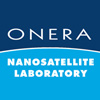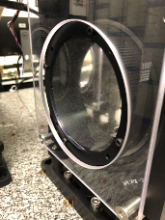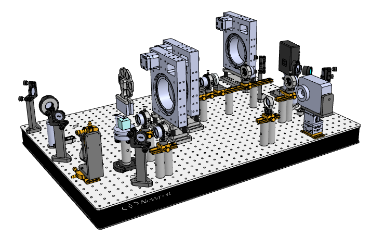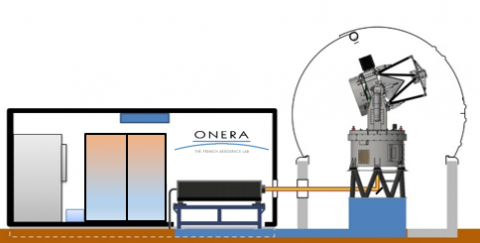To match the growing need for data throughput between the ground and space, driven by the development of upcoming mega communication constellations [1] including nanosats [2] optical links are an increasingly credible alternative to radiofrequency links. Offering a favourable SWAP, frequency allocation free and intrinsically secured very high data rate transmission, the implementation of high-speed optical communication functions between space and the ground is the subject of sustained developments that might lead to commercial exploitation in the medium term if the effects of atmospheric turbulence on the optical link can be mitigated.
ONERA has been developing methods and models to mitigate the detrimental effects of optical propagation through the atmosphere for more than 30 years. The TURANDOT code [3] simulates the complex amplitude disruptions encountered by the beam along the path and different types of correction strategies including multi-emission and adaptive optics. The PICOLO hardware bench [4] emulates atmospheric turbulences. These two projects are open to ONERAS’s partners. Finally, LISA is a compact adaptive optics (AO) system dedicated to downlink LEO optical link
All these developments among others are gathered into the FEELINGS [5] ground station, a technical validation platform for optical link telecommunication with satellites. The main objective is to flight test the channel mitigation mechanisms necessary to match the required high reliability. The FEELINGS ground station offers a monostatic configuration with a 600 mm full aperture, LEO tracking ability, a high performance ONERA built AO system for bidirectional links, a fine pointing capacity compatible with beaconless optical links and dedicated atmospheric channel characterizations.
With the FEELINGS access, ONERA also provides the joint capacity to emulate the encountered optical channel almost instantaneously (within a few seconds) thanks to the coupling of real-time turbulence channel assessment on the data and to a built-in high performance simulation process based on ONERA’s code SAOST [6].
| Left: turbulence emulator PICOLO, top left: one of the three phase screens on the bench. Right: FEELINGS ground station 60 cm telescope and dedicated adaptive optics bench. | ||||
[1] M. Toyoshima, « Recent Trends in Space Laser Communications for Small Satellites and Constellations », J. Lightwave Technol., vol. 39, no 3, p. 693 699, févr. 2021, doi: 10.1109/JLT.2020.3009505.
[2] https://www.newspace.im/
[3] N. Vedrenne et al., « Turbulence effects on bi-directional ground-to-satellite laser communication systems », Proc. Of ICSOS conference, 2012.
[4] M.-T. Velluet et al., « PICOLO: turbulence simulator for adaptive optics systems assessment in the context of ground-satellite optical links », in Environmental Effects on Light Propagation and Adaptive Systems III, oct. 2020, vol. 11532, p. 1153207. doi: 10.1117/12.2573954.
[5] P. Cyril et al., « FEELINGS : the ONERA’s optical ground station for Geo Feeder links demonstration », in 2022 IEEE International Conference on Space Optical Systems and Applications (ICSOS), mars 2022, p. 255 260. doi: 10.1109/ICSOS53063.2022.9749705.
[6] C. Lucien, L. Jerome, V. Nicolas, R. Angelique, et G. Artaud, « Performance evaluation of coded transmission for adaptive-optics corrected satellite-to-ground laser links », in 2017 IEEE International Conference on Space Optical Systems and Applications (ICSOS), Naha, nov. 2017, p. 71 76. doi: 10.1109/ICSOS.2017.8357214.



